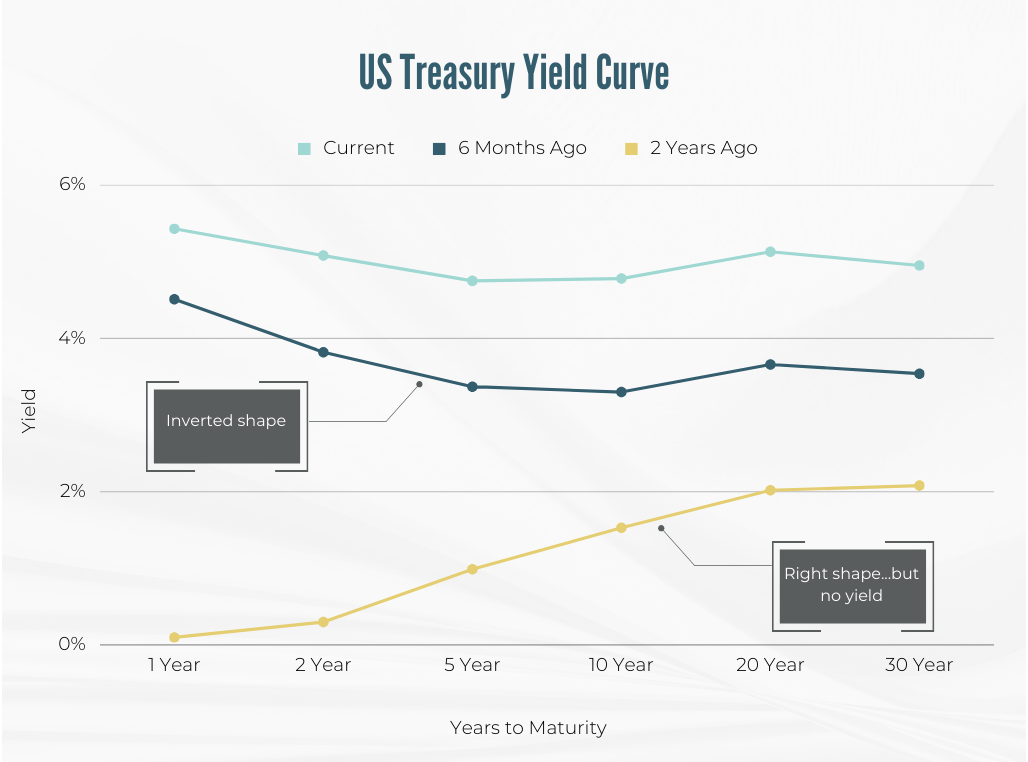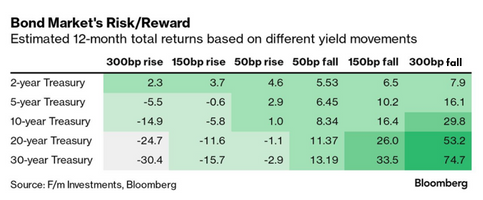
Weight Loss Drug Stocks: Investing Panacea or Diet Fad?
Happy October! While the third quarter didn’t quite turn out exactly how we’d hoped, there is still much to celebrate. October 12th marked the one-year anniversary of the 2022 bear market “bottom.”
Since that day, the S&P 500 has returned over 20%, with 69% of those gains attributed to only seven “magnificent” mega cap tech stocks. So, while we celebrate the recovery, it’s important to consider that the returns of a small handful of stocks have somewhat masked what’s happening in broader global markets.
In stocks, higher interest rates mean growth is more expensive. Labor is more expensive (tight labor market + continued heightened inflation + union pressures); borrowing is more expensive; and energy is more expensive (the price of a barrel of crude is up over 20% last quarter).
Even so, the economy is doing far better than even the most optimistic forecasts last year predicted. The Atlanta Fed's GDPNow estimate for Q3 real GDP growth is 5.1% and unemployment remains historically low at 3.8%.
In bonds, the yield curve remains inverted, meaning short-term rates are still higher than long-term rates. Generally, this phenomenon is a harbinger of recession, as it signals the market’s belief that short-term rates will soon drop in response to a slowdown. For the curve to shift back into its “normal” shape at least one of two things must happen: 1) short-term rates must fall; and/or 2) long-term rates must rise.
If we’re expecting recession, we would also expect short-term rates to fall. But over the last month, market activity shows longer-term rates rising, which is a signal that the market no longer expects recession.
Rising yields mean lower bond prices, as we all painfully learned during 2022. So, while it is still a great time to lock-in 22-year high yields in individual bonds when held to maturity…holders of intermediate- to long-term bond funds could see more losses as the Fed withdraws its support, supply increases, and term premium re-emerges.
As the financial system adjusts to these rates and stabilizes, stock and bond prices could do so as well. Consider the current risk-return profile for duration in the bond markets in the chart below, where even a modest reduction in rates next year would be exceptionally favorable for bond prices.
This is not to say that there are not still challenges facing investors in the coming months, but this backdrop is a reminder that while markets tend to rise over long periods of time, they never do so in a straight line. This is true even when the market and economic environment is improving, especially when compared to what investors had expected just a year ago.
Now onto Weight-Loss Drugs...
For long-time readers of our commentary and followers of our disciplined strategy, you know that in the past we’ve recommended extreme caution towards investing in bright shiny objects such as SPACs, Cannabis, Bitcoin, and even Amazon.
We’ve rarely been wrong.
Today, new breakthroughs in obesity treatment, stemming from FDA-approved GLP-1 diabetes medications, are already helping people lose 15-20% of their body weight. And with worldwide obesity tripling since 1975, a safe and effective tool to reduce obesity has tremendous potential to improve the lives of an estimated 1.9 billion overweight adults worldwide.
From an investment perspective, that means there’s already a potential customer market of 1.9 billion people, with US providers writing 60,000 new prescriptions WEEKLY. Add the fact that the most popular prescribed drugs, Ozempic and Wegovy, are both considered long-term or lifelong treatments, investors (including ourselves) are understandably salivating. In late June, Radix added Novo-Nordisk (NVO) to our Core Equity and First Pillar portfolios, a decision which has returned our clients over 20% in less than four months.
It's not often that something comes along with the potential to affect blockbuster changes in an industry, improve quality of life, and simultaneously build long-term wealth for investors. Any potential investment that can back up such a claim rightfully deserves the attention and capital inflow, but like any hot mega trend, also deserves to be evaluated with disciplined skepticism.
Who are the Key Players?
If you’re looking to invest in the weight-loss market, there are currently three major publicly traded biopharma companies we think are most likely to profit from the GLP-1 boom:
-
Novo Nordisk (NVO) – Novo currently has the only FDA approved drug specifically for weight loss, Wegovy; as well as diabetes treatment, Ozempic; and once-daily pill, Rybelsus. The Danish company is already generating billions of dollars in revenue from the drugs and was first to market for weight loss with this drug type.
-
Eli Lilly (LLY) – Eli Lilly’s diabetes treatment, Mounjaro, is also already generating strong sales in the treatment of type 2 diabetes and has been through phase 3 trials to expand its usage to weight management. Adoption stands to increase rapidly once the company receives FDA approval (expected later this year) for weight management.
-
Pfizer (PFE) – While not yet in the market, Pfizer is working on a similar drug in pill form, versus injectable, like Wegovy and Mounjaro. The twice-daily pill is likely still several years away from FDA approval, but Pfizer’s large scale and distribution network could quickly saturate the market. PFE’s relatively low P/E multiple of 8.7 (compared to LLY’s 85.3) and 5% dividend also make it more attractive from a valuation standpoint.
How do These Drugs Work?
This new generation of weight loss drugs work by mimicking a naturally produced hormone that regulates blood sugar. They effectively target the brain centers that regulate appetite to help you eat less. They also slow down the length of time it takes for the stomach to empty, making you feel full for longer. For those that have success, it’s recommended that the drug be taken over the long term (forever).
Beyond reducing obesity for aesthetic purposes (81% of Wegovy patients are female), we also know that obesity leads to an abundance of other serious health issues like heart disease and cancer, the top two causes of death in America today.
By treating obesity, you’re effectively potentially treating over 200 other obesity-related or weight-related diseases.
- Dr. Ania Jastreboff, Director of the Yale Obesity Research Center
A study by the makers of Wegovy have shown that it may cut the risk of heart attack, stroke, and other heart problems by 20%. This is huge news, and not something that previous weight loss drugs were proven to do. It's particularly important for patients who have already had a heart attack because the risk of having another is very high.
But is it Too Good to Be True?
As mentioned previously, it is recommended these drugs be taken for the long-term, but when weight loss inevitably plateaus between 6-18 months of taking it, many patients will elect to quit because of the high cost. Without making the necessary lifestyle changes, most quickly regain the weight and related health conditions.
Another major roadblock to high adoption is the insurers. Where Medicare and most major insurers WILL cover these medicines for diabetes patients, insurance companies have been dropping coverage for obesity treatment. But heart health problems are costly on the system, so a dramatic reduction in adverse heart events could drive insurance companies - both private and federal health programs - to reconsider. With the extraordinarily high out of pocket cost of Wegovy, at $1,350 per month, we’re skeptical that without insurance coverage, widespread market adoption is feasible.
And finally, while we’re not medical professionals, history has proven that weight-loss drugs have side effects, some of which can be serious. If any of these new drugs are found to have serious long-term side effects, it could damage the reputation of the entire weight loss drug industry.
Conclusion
Despite the risks, the weight loss drug market is still a very attractive investment opportunity. The market is growing rapidly, and there are a number of well-established and profitable companies that are well-positioned to benefit from this growth.
However, we’re not ready to declare victory over obesity just yet. In the weight-loss market frenzy, we’ve seen many stocks in the med-tech sector be unfairly punished by the implied assumption that dialysis, sleep apnea, or knee replacements (just to name a few) will be relics of the past. New technology, with its promises of world-changing impact and parabolic returns are tempting; but beware, they often result in a bubble.
As always, we’d love to hear your thoughts and if there is anything we can do to assist you and your family with your investing needs please reach out and connect.
Amy & Jess



